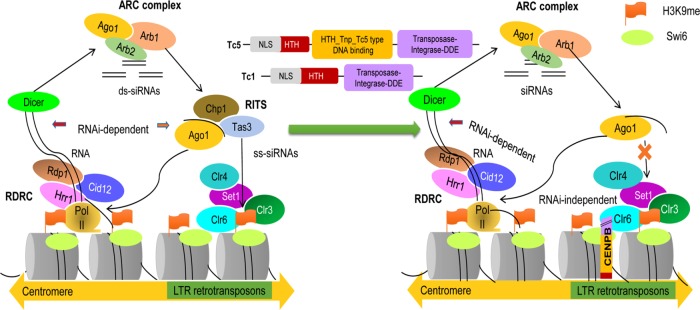FIGURE 9:
Model depicting reciprocal coevolution involving the loss of the RITS and the emergence of CENPB (abp1/cbh1) in Schizosaccharomyces. (Left) Chp1/Tas3 in RITS complex in S. pombe and S. japonicus help to link the RNAi pathway with retrotransposon silencing (adapted from Moazed, 2011). (Right) With Chp1 truncated and Tas3 absent, the retrotransposon-silencing role is taken over by CENPB proteins, which engage in heterochromatin formation. This is brought about by acquisition of Tc1/mariner and Tc5 elements. The conserved domains acquired from Tc1 and Tc5 are shown in three different colors for CENPB: red depicts the partial helix-turn-helix domain present in both Tc1 and Tc5 transposons; this domain binds to DNA but shows nonspecificity. This domain is present in human CENPB, but the S. pombe does not show its complete presence. The yellow CENP DNA–binding domain shows its acquisition from the Tc5- transposase family. The domain is again a helix-turn-helix domain but with specificity for binding to centromeric DNA. The purple part shows the partial domain of DDE endonuclease. The NLS region is depicted with black lines as a short linker.

